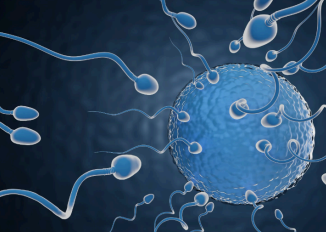
By: Christina Saitzyk
Previous research and theories has shown that many sperm swim towards the egg and the fastest fertilizes the egg. New research in cows suggests that sperm may actually swim together, forming clusters to help each other swim upstream to reach the egg.
The researcher first discovered that the many sperm swim in groups. He discovered this by analyzing sperm motility. Scientists wanted to create an environment to test sperm that was similar to the environment the sperm carried out this process. The scientists used some microfluidic devices to mimic several features that would be present in the female reproductive system. Viscoelasticity means that the fluid is both viscous and elastic at the same time. Viscous means they flow slowly and elastic means that in some short time scale, that fluid has a shape that it wants to come back. Scientists added a polymer into some long term molecules into the solution to create this mechanical property (viscoelasticity). Scientists put the polymer to increase viscoelasticity of the fluid (water). The results were that the sperm swam very close to each other, mostly in parallel and forming those groups. Scientists compared the polymer solution we used with the cervical mucus. Cervical mucus is very similar to the fluid in the cervix that the sperm swim through.
The latest research looks at how bovine sperm swim in clusters in different conditions. In female reproductive systems, there is a normal flow. When sperm swim close to a solid surface, they will
naturally form circular trajectories. In the no-flow situation, scientists found that they don’t do those tight circles. They will either be in a very large circle or the trajectory will become linearized. Scientists increased the flow rate, so some range of flow that the sperm started to align against the flow. The results found that the closer sperms were actually better aligned against the flow than the individual swimming sperm. Scientists also observed a 20% to 30% reduction of sperm being removed once they are in clusters. Studies have not concluded a reason as to why the fluid influences the way they’re swimming, that when they cluster, they do a better job of getting where they want to go.
There are different kinds of collective behaviors that have been reported across different species. So there are a lot of reports regarding how sperm actually cooperate with each other to reach the goal of fertilization.
This study is focused on women’s reproductive system in the cervix and the uterus since there needs to be many sperm in order to form clusters. So the research is not talking about the oviduct since it’s closer to the site of fertilization.
Scientists would like to use this research to develop a better diagnostic tool for possibly male infertility because the current semen analysis has not been very helpful in quite a bit of cases, those situations that are called unexplained. A possible future study in this research could include sperm selection for infertility treatment.